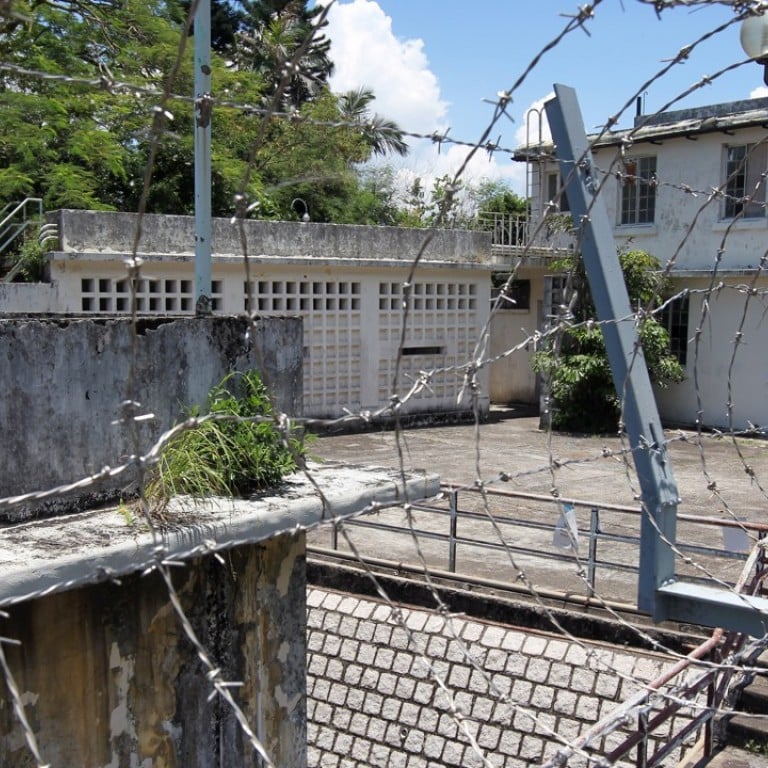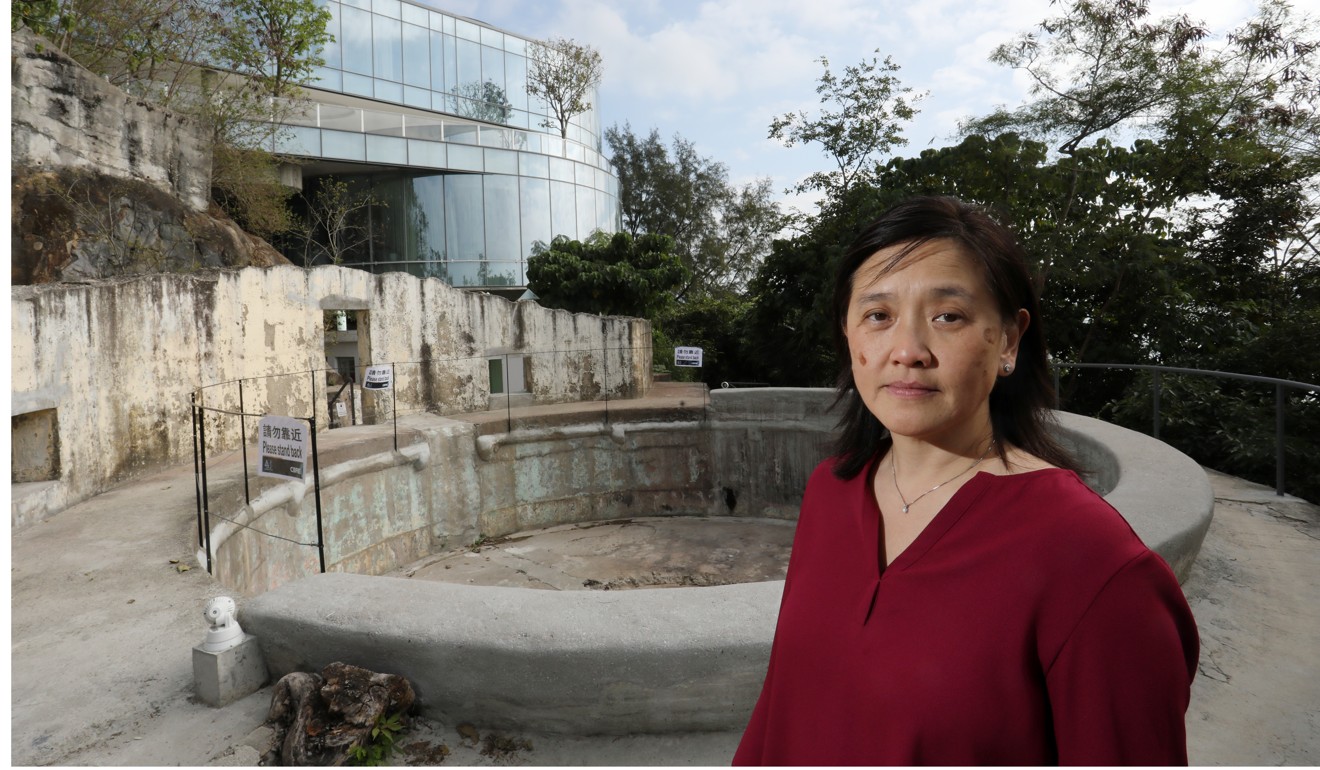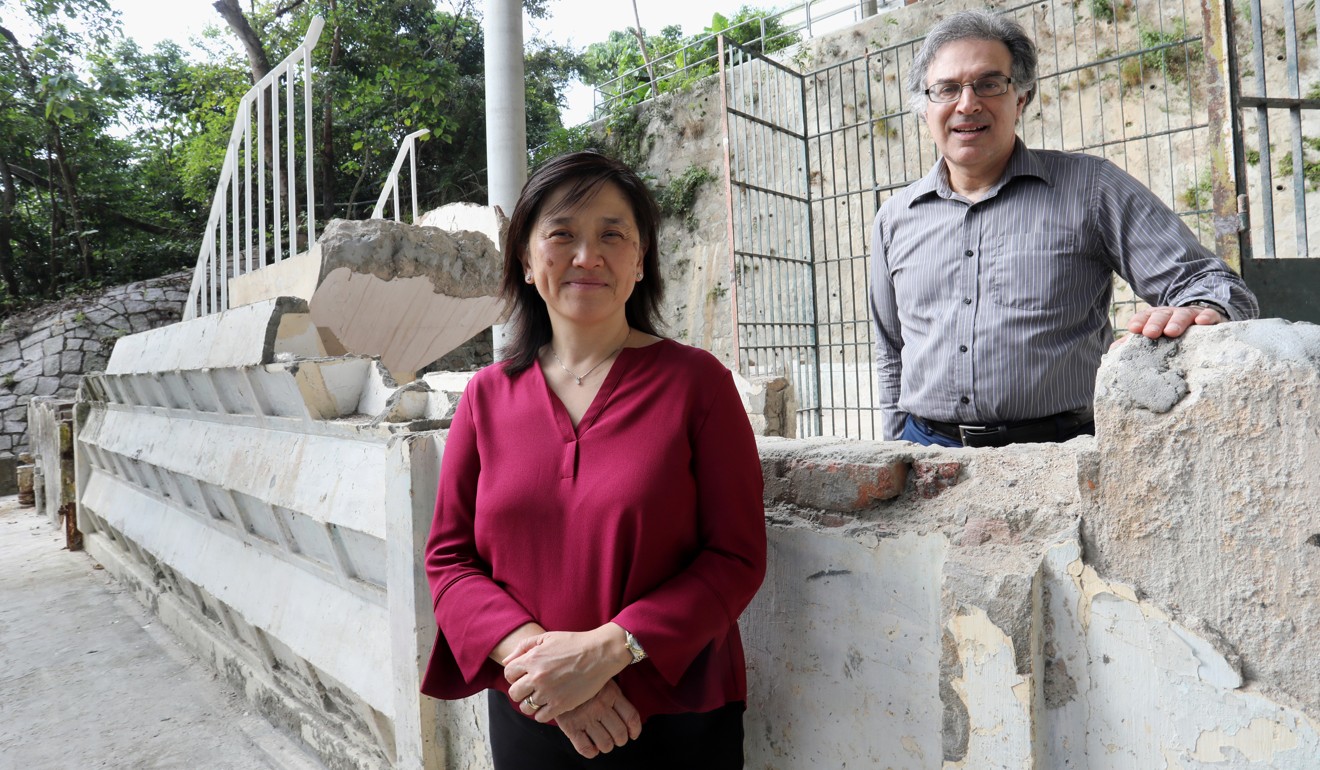
How shiny new University of Chicago campus in Hong Kong is remembering the dark past of site it’s built on, including notorious detention centre known as ‘the zoo’
- Area that once held prisoners of 1967 riot in ‘subhuman conditions’ to host replica of an early 20th century British naval gun
The University of Chicago’s Hong Kong campus will soon play host to a replica of an early 20th century battery gun as part of efforts to preserve the history of the Pok Fu Lam site, which once housed a detention centre nicknamed “the zoo” for its tough conditions.
The model will be installed as early as next summer on a 90-year-old gun emplacement, which was formerly used to defend the city from Japanese invaders in the second world war.
The space was originally part of Jubilee Battery on Mount Davis, which was built in the 1930s and contained three BL six-inch-calibre Mark VII naval guns, each weighing 6,835kg and measuring almost 7 metres long.
Two of the guns were destroyed by the British army to prevent them falling into enemy hands when the Japanese occupied Hong Kong from 1941 to 1945. The third was gone by 1946.

Professor Lee Ka-yee, chairwoman of the faculty advisory board for the university’s Hong Kong branch, said the replica was currently being designed and would be manufactured by a company in mainland China.
Senior manager at University of Hong Kong accused of sexist remarks on retirement
“The plan requires approval by the relevant Hong Kong government departments,” she said.
The university opened the doors of its Hong Kong campus last Friday at 168 Victoria Road. The site formerly contained the Victoria Road Detention Centre, which housed left-wing detainees in 1967 amid riots across the city.
University of Chicago President Robert Zimmer said the Hong Kong campus was an important addition to the institution’s international presence.

“It represents a long-term commitment to a wide range of academic collaborations that will make a positive social impact in Hong Kong and Asia,” he said.
The detention centre, which was better known as the “white house”, was built in the early 1950s as a recreational facility for the British Royal Engineers Regiment. The disused gun emplacement was built between 1936 and 1939.
University of Chicago unveils sleek Hong Kong complex on site of former Victoria Road Detention Centre
Lee said the site was also used to house nationalist soldiers who retreated to Hong Kong from mainland China after losing the country’s civil war, which took place from 1945 to 1949. The troops stayed there until 1950 before the colonial government moved them to Rennie’s Mill in the southeast New Territories, later renamed Tiu Keng Leng.

The counter-espionage arm of the Hong Kong police force took over the site in 1961 and used it to hold Kuomintang spies from Taiwan caught smuggling explosives to the mainland.
During Hong Kong’s anti-colonial riots in 1967, the same police unit used the area to hold 52 leftists in detention, under emergency regulations designed to crush morale among protesters and drive leaders of the movement underground.
Among those held were actor Fu Qi and actress She Wei.
The University of Chicago plants its roots in Hong Kong
Prisoners nicknamed the centre “the zoo”, a reference to treatment they saw as subhuman. They were detained without due process, with many kept in solitary confinement.
The riots, the worst Hong Kong has ever seen, claimed 51 lives, including 15 in bomb attacks.
From 1990 the centre was used as a police witness protection unit. It became unoccupied after Hong Kong returned to Chinese rule in 1997.

In July 2013 the university was granted the grade three historic site to build its campus. In 2016 the institution launched a US$75 million restoration and construction project with the support of the Hong Kong Jockey Club. The new campus includes a heritage and history centre.
Bannon invite sparks protests at University of Chicago
Kenneth Pomeranz, the university’s professor of modern Chinese history, led a research team tracing the history of the site.
“In the past two years we visited 10 archives and libraries, including Britain’s National Archives in London, the International Red Cross archive in Geneva and archives in Taipei and Japan,” he said.
His team also interviewed three detainees of the 1967 unrest.

Lau Man-shing, one of the survivors, said he appreciated efforts to preserve the history of the place.
Heritage trails on the campus and the gun will be open to the public. Block B, now an academic building, has marks on the ceiling and floor where detention cells once stood.

